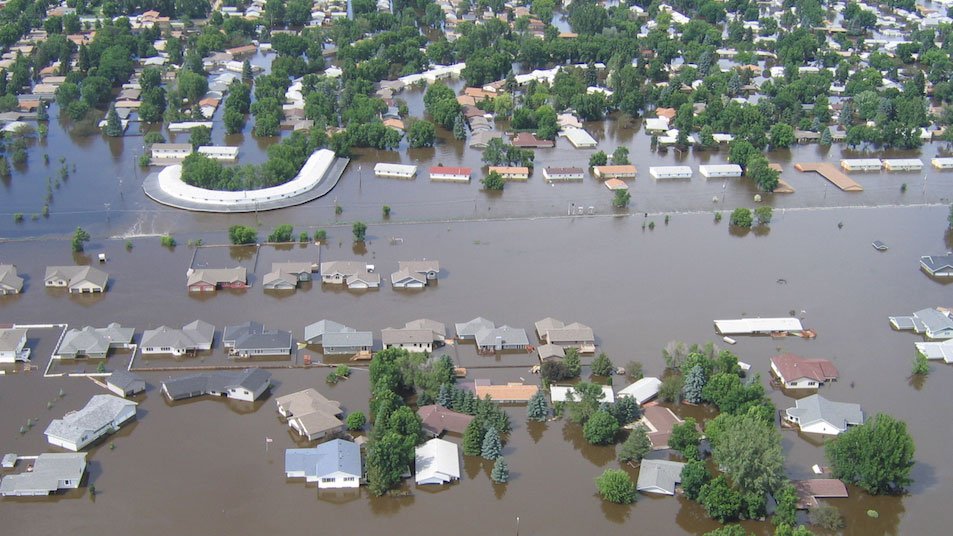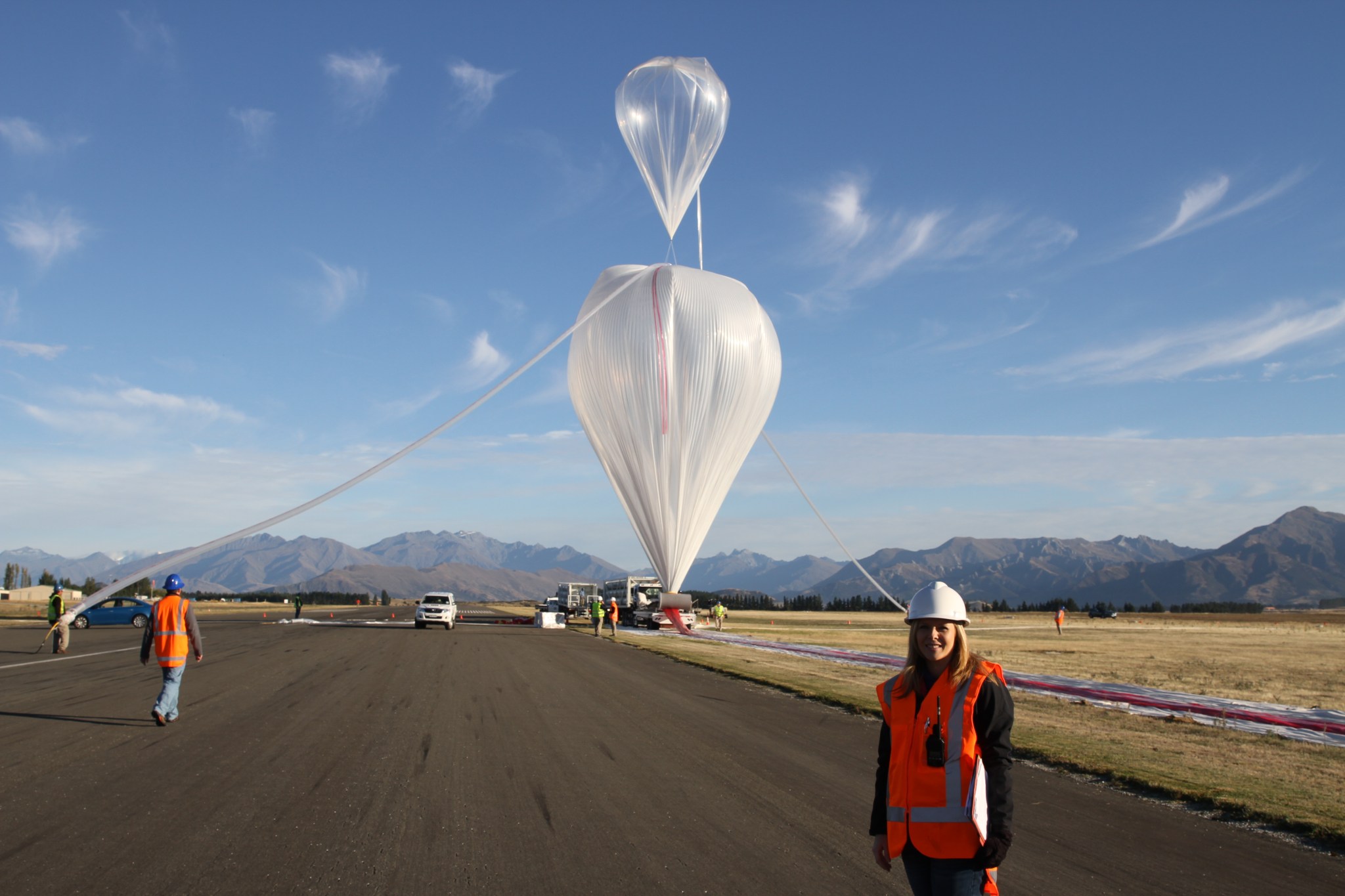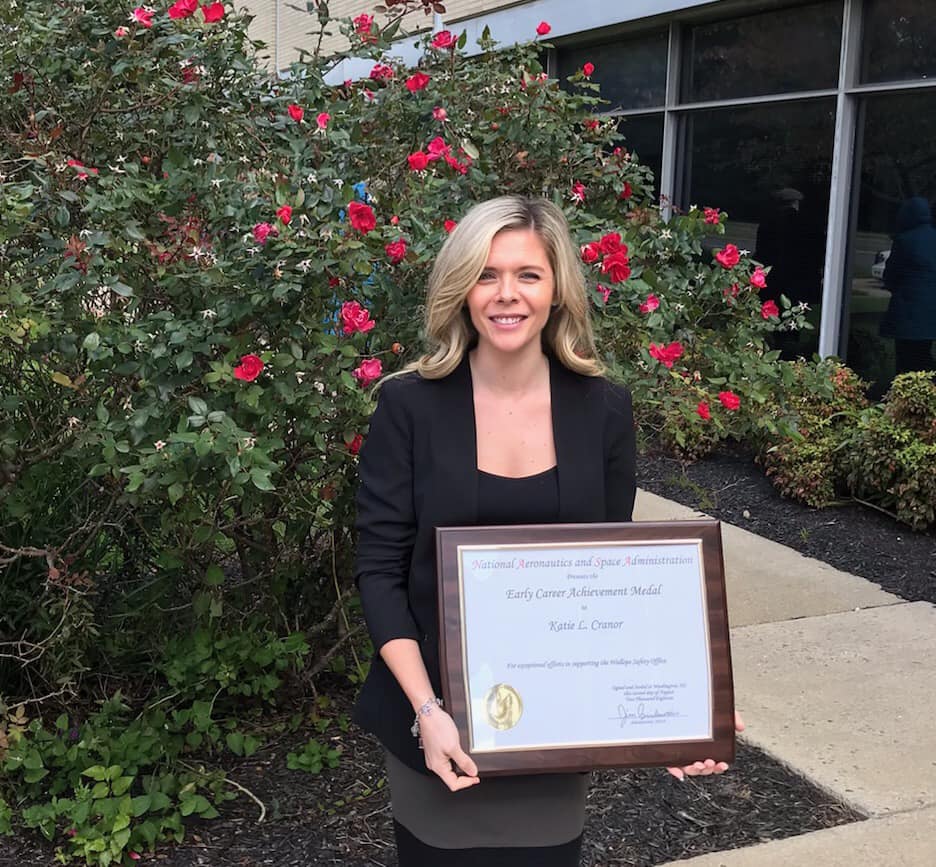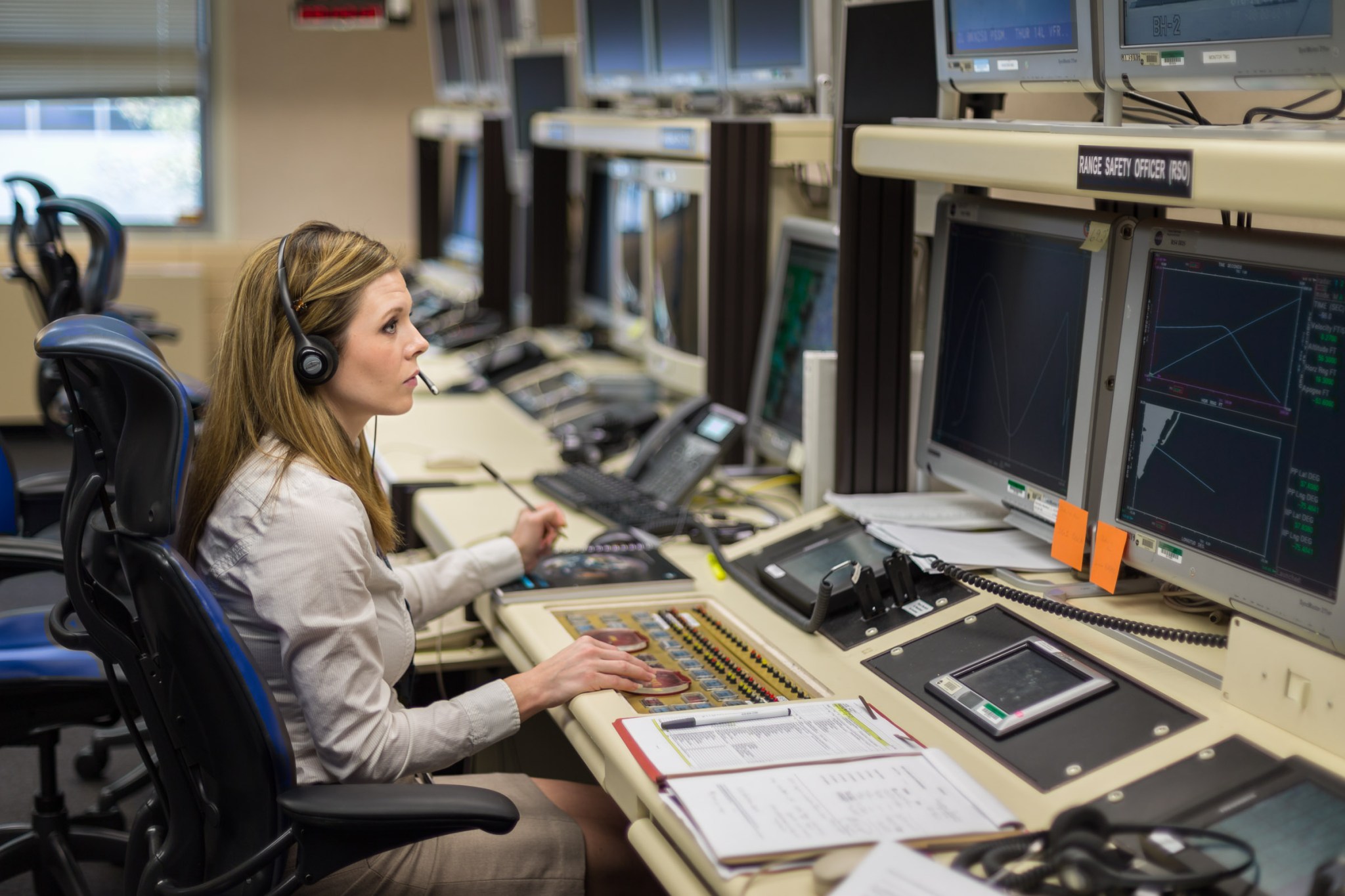Name: Katie Cranor
Title: Associate Division Chief of the Wallops Safety and Mission Assurance Division, includes both Range Safety and Institutional and Occupational Safety
Formal Job Classification: Aerospace Engineer
Organization: Wallops Safety and Mission Assurance Division, Wallops Flight Facility (Code 390)
What do you do and what is most interesting about your role here at Goddard? How do you help support Goddard’s mission?
I have recently become the associate division chief of the Wallops Safety and Mission Assurance Division, which includes both Range Safety and Institutional and Occupational Safety. Although I have not held this position very long, I hope to strengthen the safety and mission support for Wallops’ program. This is a new organization and our original group is now moved under the Safety and Mission Assurance Directorate. We now are integrated into a much larger group and have closer connections with NASA’s safety and mission assurance (SMA) program.
I look forward to enhancing our support to align with the agency’s and Goddard’s SMA goal. I am really excited about assisting and developing the division and its talented people. Wallops’ mission set is increasing and we play a key role into the safety and success of all of our missions.
What prior positions did you hold at Wallops?
Initially I was an assistant range safety officer (RSO) at Wallops Flight Facility. I oversee and lead the safety team in the execution phase of launch operations. I review the plans and procedures for launch and then I implement to ensure launch activities are conducted while protecting the public and the workforce. We cover all launches conducted under the cognizance of the Suborbital and Special Orbital Projects Directorate, Code 800 at Wallops, including expendable launch vehicles (ELVs) such as Antares, suborbital sounding rocket missions and high-altitude scientific balloon operations launched worldwide.
For the past two years, I have held a leadership position on detail as the deputy chief for flight safety. My responsibilities included leading the team of engineers that actually created the pre-mission flight safety analysis and plans. Previsously I was an end user of this product. In this role, I lead the team that created these products for the RSO to execute the launch.
Although I am now in a management role, I am delighted that I will be the flight safety officer (FSO) for the upcoming Antares launch. The FSO and RSO work very closely together. The FSO is the primary person responsible for initiating flight termination in the event the vehicle violates the safety plan.
What is your educational background?
In high school, I had a passion for mathematics and critical thinking. I have dual bachelor’s of science degrees in pure mathematics and computer science from Salisbury University. I also have a master’s in aeronautical science from Embry Riddle Aeronautical University Worldwide, achieved at no cost to me through participation in Goddard’s Academic Investment for Mission Success program.
How did you get to Wallops?
I am from the Eastern Shore of Maryland, and the summer after my sophomore year, I interned at Wallops, helping develop software for range and safety support. I remained as a part-time software engineer during the last two years of my undergraduate degrees. In 2007, I became a permanent, full-time employee with a contractor supporting the Range and Mission Management Office (Code 840).
What special training is necessary to become a range safety officer or a flight safety officer?
We have a very rigorous RSO training program, ending in certification with various types of vehicle platforms. It is challenging to be successful in this program because it takes a certain attitude and aptitude to think on your feet and make quick concrete decisions.
In 2011, I became the youngest woman to enter this NASA Wallops program at that time.
Due to our intensive training, our thoughts and reactions to a situation are likely not the first time that we have thought about or been presented with a particular scenario. Our extensive training allows us to think quickly and react, provided you have the foundational skills and thought process that allows for it.
Each different type of vehicle requires a specific certification. The certification process takes several years and involves both classroom and on the job training including on-console performance evaluations. At the end of the training, we must pass both a written test and a performance-based test using operational support equipment fed by launch simulation software.
The training for a FSO is identical to that for a RSO. A person becomes a RSO first, works several missions, and then graduates to the FSO role. They have the same training and same functions, but the FSO is more experienced and more senior.
What qualities make a good range safety officer?
Certainly the ability to think on your feet, make quick critical decisions and keep a level head during a crisis.
How do you ensure range safety for an assigned launch?
When we have an upcoming launch, we discuss the specific safety requirements applicable for that operation, which vary according to the mission profile, mission trajectory, rocket capabilities and other factors. I review the plans and procedures developed by the Flight and Ground Safety organizations. Then I lead the team in mission-specific training and simulations to assess our proficiency. It’s through this and the pre-launch activities where we work through all potential things that could happen and we mentally prepare, so reacting to scenarios during a live mission is like second nature.
What do you do on launch day?
On launch day, I determine the final go or no go for safety for my assigned launch. I verify all our plans and procedures. The range safety officer provides the final go or no go for safety. The final launch decision authority for NASA is the test director.
I participate in the launch operation countdown. I have a team that monitors all aspects of safety including ground safety, surveillance and meteorological conditions, including wind conditions. Information from various support positions feeds up through our reporting protocols to me as the RSO, and I assess the information to determine if it fits within the launch safety requirements. If so, then we are go for safety.
There are various stages of the countdown. When you hear “RSO (Range Safety Officer) is go on the net,” that is me. I hear many times from peers its inspiring to hear diversity on this net, including female voices in a traditionally male-dominated field.
Once liftoff occurs, the flight safety officer and I together will monitor the flight for vehicles with active guidance systems. We are responsible for executing flight termination if the flight performance violates our safety parameters. Our console has a flight termination button panels, which essentially is a big, red button.
How do you feel on launch day?
Launch day is exciting. Every launch, you get butterflies, and that means you care. I really believe that. It is the biggest sense of accomplishment when we launch safely and successfully.
What lessons did you learn from your involvement with the October 2014 Antares mishap?
I was the range safety officer that day. I gave the range safety go for launch. Our team ensured that the launch met the safety requirements. We implemented those requirements and made sure that the operation executed so that everyone stayed safe.
I was on the console with my flight safety officer. The data on our screens indicated a major vehicle malfunction. Within the first 15 seconds, the flight safety officer and I agreed that we needed to terminate the flight. He pushed the red flight termination button. The vehicle fell back to the ground and exploded without any further incident or harm to anyone.
We remained to direct and secure the area to ensure that people stayed safe after the mishap. We have to confirm that every single piece is down before anyone can enter the area.
On that day, our safety team did our job. We had no injuries or casualties. We do not look forward to a bad day, but are prepared when it happens like that. Knowing we had a direct role in ensuring safety makes us very proud. In this business, NASA does some amazing and somewhat risky things. It is disheartening when a mission fails, but ultimately it’s because of our involvement that we can keep doing these as Safety has to be the number one priority.
How does your extensive training keep you so calm even on a bad day?
A few years ago, when my son was very young, he had an incident where he experienced head trauma. My son was bleeding from his ear. He had to be flown from southern Maryland to Children’s National Hospital in Washington, D.C.
In that initial moment of crisis, I did not panic. I did not act with emotion. I did what I had to do. I very quickly and systematically planned what we were going to do and how we were doing to do it. I then talked through my plan.
The training I have had in my job directly related to my personal life and prepared me for handling our son’s emergency. I feel I handled my son’s crisis very well. I just went into automatic mode. I feel very fortunate to do what I do because it enabled me to help our son during his crisis. My son is OK now, in part thanks to my NASA training.
If someone has an emergency, what words of wisdom would you give them?
Remain calm and think through a plan. In order to be the best you can in that moment, you have to put yourself in that situation well ahead of time and make a plan in advance. You need to have the steps already in your head to quickly access during an emergency. So think through ahead of time how you would handle various emergencies. If you have a plan, and you know your plan well, then executing your plan in a crisis is the easy part.
What is the difference between Antares and high-altitude scientific balloon launches from your viewpoint?
A balloon launch is a much slower process. With Antares, you may only have seconds to make a decision. With a balloon, you have time as those missions last days, weeks, or months, versus minutes with rockets. You have to attack the problems you encounter differently, and with additional time, you may make different decisions as new information is presented to you. Balloon launches have taken me to really interesting places, like New Zealand and New Mexico. Also, I’ve been able to travel to other places such as Norway, Alaska, and Kwajalein in the South Pacific with my work on the other suborbital program at Wallops – Sounding Rockets.
Who is your leadership role model? What makes a good leader?
There is no one person alone that I have defined as my role model, there are many, and they are all the same type of person. The folks I look up to and aspire to model are those that people listen to when they speak. People respect them for what they have to say and hold their opinion in the highest regard. I take mental notes when they are engaged in discussions, activities, etc., and I try to model similar behavior with my own work activities.
Leading is important to me. Leading is more than being the person in charge. Being really good in a subject matter is not always enough to be a credible leader.
When you are talking to senior management or when you are trying to lead a team, you must have the qualities of an effective leader.
I look up to people who, through their actions, inspire everyone to be quiet, listen and believe in them. They exert quiet confidence. They have the confidence of their people, that’s the key. Being effective requires that your team have confidence in you, your plan and your ability to achieve the plan.
Is there something surprising about your outside of work that people do not generally know?
I am dedicated to being as organic as possible in terms of what my family eats and how we live. I have an herb garden. I like to shop at farmers markets and other small, local establishments. I prefer natural personal care products and sometimes make my own lotions and shampoos.
My husband and I have three young children. My eldest loves to dig in the garden with me.
What is your “six-word memoir”? A six-word memoir describes something in just six words.
Energetic. Fast-paced. Resilient. Optimistic. Committed. Empathetic.
By Elizabeth M. Jarrell
NASA’s Goddard Space Flight Center






























